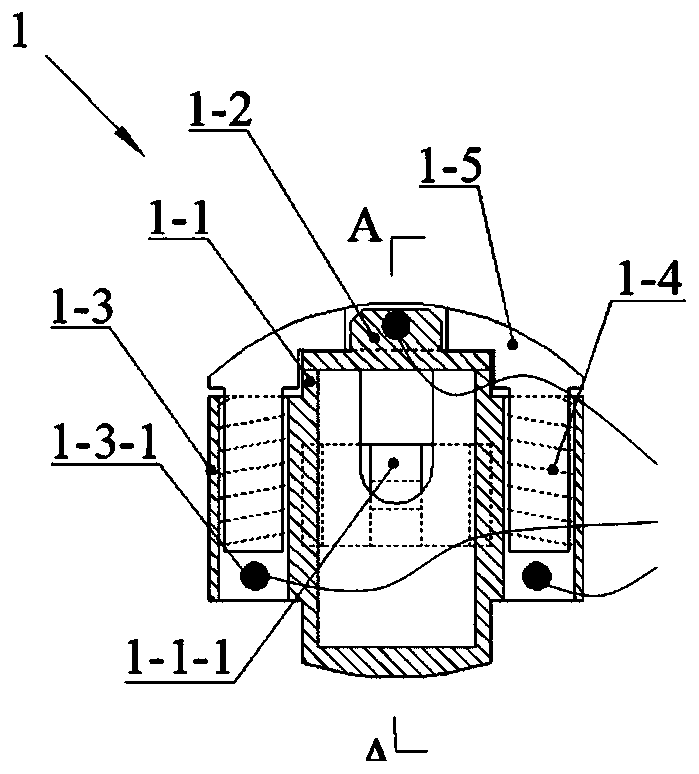An acoustic emission monitoring system
A monitoring system, acoustic emission technology, applied in measuring devices, using ultrasonic/sonic/infrasonic waves, instruments, etc., can solve the problems of acoustic emission detection limitations, prolonging the project progress, long cycle, etc., to achieve repeated use and ensure the coupling effect , enhanced stability and the effect of
- Summary
- Abstract
- Description
- Claims
- Application Information
AI Technical Summary
Problems solved by technology
Method used
Image
Examples
Embodiment 1
[0051] The acoustic emission monitoring system provided by this embodiment is as figure 1 As shown, it includes an acoustic emission sensor and a ground workstation 4, the acoustic emission sensor is used to be installed in the borehole 6 of the monitored rock mass 7, and the received monitoring signal is transmitted to the ground workstation 4 through a cable 5, and the ground workstation 4 The computer 4-1 processes and displays the monitoring signal from the emission sensor; the acoustic emission sensor is composed of the acoustic emission probe 2, the probe installation mechanism and the transmission mechanism 3 that transmits the installation mechanism equipped with the acoustic emission probe to the set position in the borehole Composition; there are two probe installation mechanisms 1 and two acoustic emission probes 2.
[0052] Such as Figure 9 , Figure 10 As shown, the above-mentioned acoustic emission probe 2 is a cylindrical structure with a cable connector 2-1 ...
Embodiment 2
[0066] The acoustic emission monitoring system provided by this embodiment, such as Figure 19 As shown, it includes an acoustic emission sensor and a ground workstation 4, the acoustic emission sensor is used to be installed in the borehole 6 of the monitored rock mass 7, and the received monitoring signal is transmitted to the ground workstation 4 through a cable 5, and the ground workstation 4 The computer 4-1 processes and displays the monitoring signal from the emission sensor; the acoustic emission sensor is composed of the acoustic emission probe 2, the probe installation mechanism and the transmission mechanism 3 that transmits the installation mechanism equipped with the acoustic emission probe to the set position in the borehole Composition; the number of the probe installation mechanism 1 and the acoustic emission probe 2 is three.
[0067] The structures of the probe installation mechanism 1 and the acoustic emission probe 2 provided in this embodiment are the same...
PUM
 Login to View More
Login to View More Abstract
Description
Claims
Application Information
 Login to View More
Login to View More - R&D
- Intellectual Property
- Life Sciences
- Materials
- Tech Scout
- Unparalleled Data Quality
- Higher Quality Content
- 60% Fewer Hallucinations
Browse by: Latest US Patents, China's latest patents, Technical Efficacy Thesaurus, Application Domain, Technology Topic, Popular Technical Reports.
© 2025 PatSnap. All rights reserved.Legal|Privacy policy|Modern Slavery Act Transparency Statement|Sitemap|About US| Contact US: help@patsnap.com



